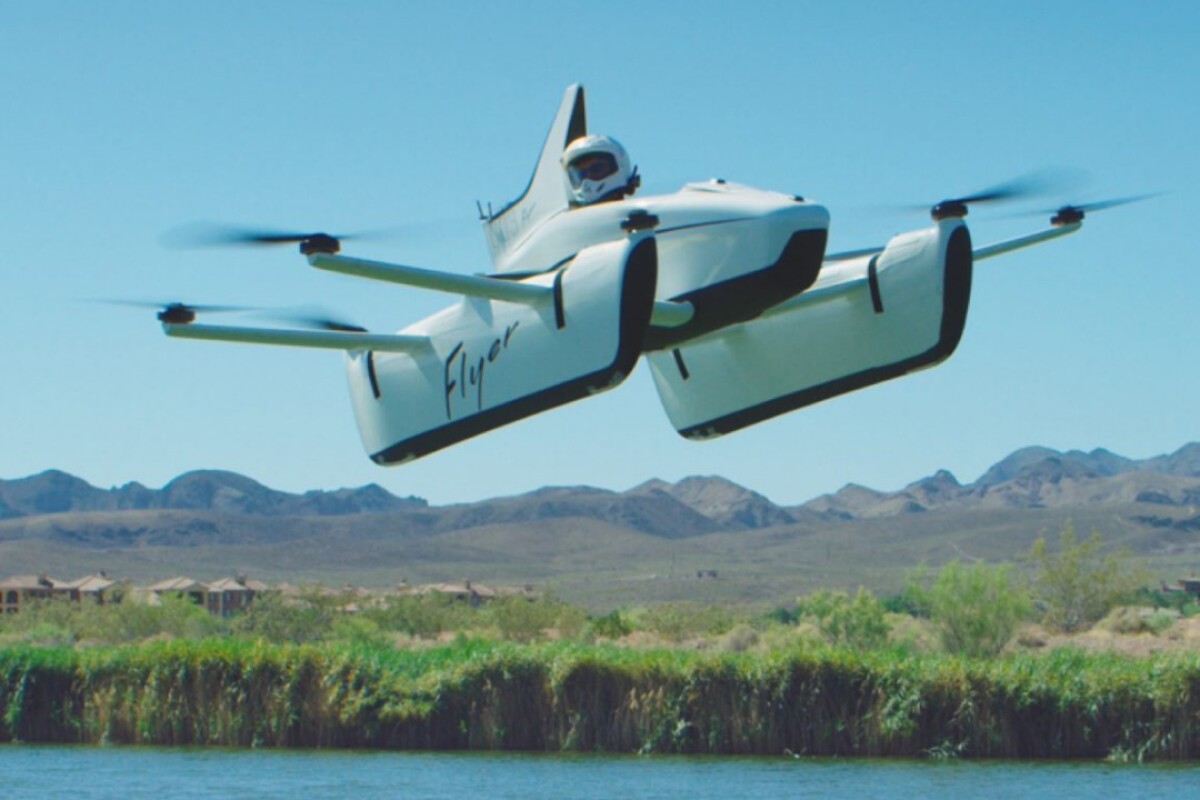Larry Page's Kitty Hawk startup has been beavering away on several different personal flight projects, including a self-piloting, electric VTOL air taxi that can be used for Uber Elevate-style aerial commuting. The Silicon Valley company has also been working on something sportier – a single-seat multicopter fun machine called the Flyer. And today, the team released images and partial specs on what looks to be the final production design.
It looks kind of like the pilot is sitting in a high-end basketball shoe in the sky, with two pontoon floats either side. The suggestion is clear: please fly this thing over water, where at least if you crash you've got a chance.
The Flyer runs 10 electric fans with no prop guards, each one looking roughly three feet (1 m) long, arranged across a hash-shaped airframe measuring 8 x 13 ft (2.4 x 3.9 m).

Flight time is somewhere around 12 to 20 minutes, depending on pilot weight and the speed you're flying at. In terms of safety, Kitty Hawk has currently decided to limit altitude to between 3 to 10 ft (0.9 to 3 m), and maximum speed to 20 mph (32 km/h).
The company says you can learn to fly it in "less than an hour," and fly it without a pilot's license as an ultralight aircraft, meaning you'll need to keep it away from populated areas.
Can you buy one? Yes. It's available for pre-order now at an undisclosed price, and only by invitation. But you can apply to get an invitation. Which makes it less of an invitation, really. The company also seems to be suggesting it'll make flights available as a leisure experience, which strikes us as a great solution, particularly if the guys in charge quietly keep a remote control on hand in case a pilot gets out of their depth.
Check out the Flyer in action in the video below.
Source: Kitty Hawk











